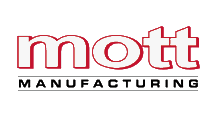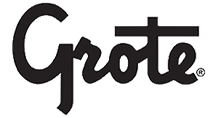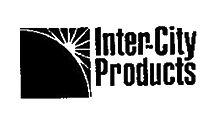What is lean?
There is not one agreed upon definition of lean. In the eyes of different education and consulting groups, it can be different things. A problem is the lack of a Lean Standard, as there is with quality (ISO Standard). It’s made up of many subsections, like the Total Productive Maintenance, Quick Change, Containerization, Pull System, Error Proofing, 5S, many more elements. It can be quite overwhelming to an organization that’s first looking at it and trying to figure out how to implement it in their company.
What it boils down to is the process. It’s about taking your traditional operation and trying to streamline the environment: that’s the factory floor and the office, the whole company.
What is the main approach?
Because there is no Lean Standard in the world, it’s up to each company that’s training and educating people on lean to interpret the Toyota Production System on their own. Hence, some of them get it right and some of them don’t. There are many approaches, but it encompasses the journey from traditional methodology to lean production, while looking at the entire enterprise holistically. We did this when we started in 1986, while most have only started looking beyond the factory in the last ten years, since around 2007. Most consulting groups, when they come in to try and help a firm with improvements, they look at the organization how it’s structured (Vertically) not how the processes run from end to end (Horizontally). We started doing this since the 80’s and its just one of the elements that we consider.
What are some lean tools and techniques?
Well, it boils down to probably 4 or 5 different elements. One is trying to determine what value is in your process. The activities of workers as they are operating in the office or in the factory can be either categorized as: essential activities, or non-essential that shouldn’t be there. Today, they call this value-added and non-value-added. The value is one thing that they must look at very hard. Another element is value streaming. What do you need to do? There are some core value streams in your business, what we call the Make Ship loop, and there’s the supply chain loop in the business. Understanding what the high-level value streams are and then breaking the company down into core value streams and sub-value streams helps you start to understand the flow. You can then identify whether it’s good, bad, or where the bottlenecks are, and the whole issue of scheduling. We talk about pull scheduling when we’re talking about lean. Traditional manufacturers tend to push goods through the organization, and we help companies change to pull things through the factory, as opposed to pushing them. So, that’s another important element.
What is the Lean Belt System?
The idea was taken from martial arts, where this system is very well known. In 1999, a gentleman named Michael Harry, who was part of the development of Six Sigma at Motorola, opened his own business and decided to use a belt system. He had a white belt, yellow belt, green belt, black belt and master black belt. These represented different levels that a student would go through in a company to gain higher levels of learning and capability. Each belt takes you up a notch in terms of your understanding of whatever the subject is. You get a certification every time you move up the ladder.
Some training companies such as ours, use this system of certification. So, the belt is really a level. I believe strongly everybody in a company should be at least at the green belt level. Then, they’re educated, and they’re ready to go on projects and participate in a meaningful way to implement lean. Black belts are usually a small number of employees, but they’re responsible for selecting projects, understanding them, monitoring teams, and leading them. A master black belt is like a mini-trainer from the outside. When we go in, our goal is to transfer our knowledge to a master black belt, who takes over when we leave.
- Learn more about Lean Belt Certification
- Holistic Lean Training
- Custom Lean Training
- Online Lean Training
What are the 5S’s in lean terminology?
5S Training is one of the components of Lean. The 5S’s stand for Sort, Straighten, Shine, Standardize and Sustain. The focus of 5S Training is to organize the workplace in order to make it safer and more productive. You can learn a lot more about 5S by clicking on the link below and listening to a detailed presentation.
What industries can lean be applied to?
That’s a good question. In the beginning, when I started the company, it was hard enough to get manufacturers interested because there was the “It won’t work here in America, or in Canada” idea. We’ve learned over the years that the principles of lean, being process oriented, work in any industry, any office, any type of business. We’ve worked in with success in healthcare. We have implemented lean in wineries, improving efficiency throughout the organization. We’ve also worked with great results in the food industry, insurance companies, and many other industries. In Canada, most companies are not as far ahead as in the States, but we’re on the verge of the insurance companies opening up in a big way to the whole lean experience.
- Manufacturing
- Management
- Business
- Health Industry
- Legal System
- Government
What types of lean training are there?
Organizations that are applying Lean Thinking to achieve the greatest improvements in speed, efficiency and profitability share a common characteristic: each one fully utilizes the knowledge, skills and enthusiasm of people at all levels. There are several approaches to implementing the Lean elements.
- Holistic Lean Training
- Custom Lean Training
- Online Lean Training
What are common issues when implementing lean?
There can be a number of issues. Starting at the top, senior management needs to do much more that to simply support the program. In our experience, it’s way more than that. To do a successful implementation and transfer of operating methods, we need a senior management that can teach lean. They need to be engaged, and the way they lead is by using some of the new tools that are out there that Toyota uses, like Hoshin Planning. By doing that, and doing it properly, the senior management now has a role to drive what needs to be changed in the business and to pass that down level by level. They must communicate very well with the entire workforce.
The people in each company is your biggest variability and can cause different concerns. Obviously, you want people to participate, but if you don’t have leadership at the top, the people will do whatever they want. I think inherently people want to improve their business, but they’re nervous. If you have a management team and go in a company that has not worked in teams, people are generally going to be afraid to participate in anything new, and think “Well, this is another case where the President got off an airplane, read a book and it’s the project of the month”. You’ve got to get past all of that, and the best way you can is with a good level of education. Personally, I don’t understand how a president of a company can tell the workforce we want to do lean and not give them the tools or the knowledge necessary. Remember, they might have been working there 20 years using the traditional methodology and they don’t know the difference between a streamlined process and what they’re currently doing. So, you may end up digging the same hole deeper and expecting better results without the proper training.
Communication can also be a problem if everything is not set up properly. Lack of project management, not providing the necessary resources, there are many things that can get in the way.
- View a list of our clients
- Learn the steps we take to combat these issues directly from our team of educators
How is CTM an industry leader in lean training?
We’ve helped companies, many of them, implement lean operating practices over the last 35 years, so we have a very good position and understanding of what it takes to implement the lean techniques and change from traditional processes. We have also developed a through set of criteria to help standardize lean training to ensure that it is done properly.
What experience does CTM have with lean?
One thing you can be sure of. The CTM Program Directors “have been there and they have done it before”. These professionals are true practitioners. They spend the vast majority of their time, and their careers, in the field and on the job, learning and perfecting their craft. For them, it is an ongoing task, and no matter what they develop for the classroom and books, they know it only works when it is put into practice.
How does lean increase profits?
Cycle Time Management has helped companies increase pretax profits up to 27 fold. In the last three decades it has become clear that the elimination of waste, or non-value-added activity, has freed business to increase profit margins drastically. In the case of Mott Manufacturing, once the CTM evolution plan was successfully implemented, the firm experienced extraordinary increases in sales, which in turn generated greater profits.
How does lean optimize efficiency?
Treating people as a value adding asset in the process of business improvement is an essential CTM ingredient for success. It allows the people in the organization to take responsibility for the business process, which generates a continuous improvement mentality and empowers the whole organization to assist in the decision making for future success!
How does lean maximize productivity?
- When Cycle Time Management’s Program Directors come to your company to custom-tailor your Learning Cycles Supervisor program, they will quickly zero in on the key issues. They will determine where you are at, what the barriers are, and then develop the appropriate workshop lessons and approach.
How does lean cut costs?
A key focus of Lean is on eliminating waste. We’re talking waste of overproduction, transportation, when a piece of equipment is sitting idle, people are sitting idle, motion (taking ten steps when you only need to take one if your operation were laid out differently), over-processing, inventory, and defects. All of those are various types of waste that are found in what we’ll call traditional organizations as opposed to somebody attempting to implement lean.
I still go into factories today that have a 20-ton press which takes 8 hours to do a changeover of a die on. A company that has implemented lean however, can do it in 10 minutes on an identical machine. So, there is quite a difference once you allow yourself the flexibility to shorten your runs and move more effectively.
What does Toyota have to do with lean?
Though Toyota is considered “The Father of Lean”, the story behind lean goes back even before Toyota, in the 1920s with Henry Ford. At the time, Henry Ford came up with new and exciting production methodology. The Japanese looked at that and created their own, and over numerous years it evolved into its current form which is composed of the many elements It’s an ongoing evolution of understanding the process, and one of the big variables is people: understanding people, how they relate, and how to integrate them into the production system.
Lean Framework Introduction
The Pathway to Excellence
The Lean Framework is the “Pathway to Success” for companies wishing to begin, to continue or to re-start their Lean Journey. The key to successful implementation of lean manufacturing must be the total commitment on the part of every employee in an organization to make it work. By that we mean: all levels of the organization, from employees to supervisors to managers to the senior management, must be aware of the fundamentals of lean and must make their best efforts to practice and improve them day-by-day.
The key to successful implementation of lean manufacturing must be the total commitment
A critical reason lean journeys fail is that organizations try to implement individual elements instead of the entire Lean Manufacturing approach. Since the elements of Lean Manufacturing are integrated and interdependent, any attempt to implement Lean Manufacturing only partially will produce very sub-standard results. For Lean Manufacturing to work effectively, it needs to be adopted in its entirety, not piecemeal. It is the totality of the elements and the synchronized relationship to one another that make them most effective.
CTM has implemented the Lean Framework to numerous clients over the past four decades with tremendous results
We have implemented the Lean Framework to numerous clients over the past 4 decades with tremendous results. We have built several case studies to illustrate the effects that the framework can have when implemented correctly. You can read through these case studies in the benefits pages: “Increase Profits”, “Minimize Costs”, “Maximize Productivity”, “Optimize Efficiency”. For more information contact us directly.

Lean Simulation for Smart Investment
Simulation is a proven proactive tool for proper decision-making and complex comparative analysis. With simulation, organizations gain the ability to cost-justify their decisions to make process improvements. Along with Lean activities, advanced simulation is an economical tool that helps you understand change within your processes and visualize both changes and the resulting costs prior to implementation.
With simulation, organizations gain the ability to cost-justify their decisions to make process improvements.
CTMs multidisciplinary team draws on the experience of specialists in technology, Lean process engineering and specific industry verticals to develop highly accurate, carefully validated simulation models. Relying on a world-class analysis methodology, CTMs simulation modeling tool enables us to:
- Model complex systems that mirror your current state to accurately measure the impact of proposed operational changes
- Establish quantifiable baseline measures related to your operational capacity
- Assess the effect of new conditions on key metrics, such as the impact of staffing changes on productivity or the impact of automating manual processes on costs
- Identify process bottlenecks to prioritize action items
- Develop detailed reports that can be exported to other tools for further analysis
- Identify the key cost contributors to each of your processes to support Lean business case development and provide insight into the payback equation
- Visually display how changes to specific variables will affect organizational output
- Predict the success or failure of operational changes down to a specific percentage of probability
Find your firm’s potential today!
Industry Leader
CTM has developed a comprehensive process (The Lean Framework) that allows an organization to create an environment and a means for change. Change that permeates the entire company and becomes a new paradigm for growth.
Learn MoreIncrease Profits
CTM's Lean Framework sets out clear-cut objectives that can be achieved through an ongoing process of cycle time reduction and continuous improvement. This process has had tremendous results consistently.
Learn MoreOptimize Efficiency
Moving from reactive to proactive thinking in the work place. Having the employees understand the importance, scope and techniques involved allowed many clients to move forward at greatly accelerated rates.
Learn MoreMinimize Costs
CTM focuses on five key issues: identifying waste, cellular production, scheduling, production line processes, and production line support. Our process helps firms eliminate all inefficiencies and thrive.
Learn MoreMaximize Productivity
Clients have found CTM’s Lean Assessment approach of key employee interviews, financial review, facility visit and a lean manufacturing evaluation to determining lean implementation requirements has been very effective.
Learn MoreProven Experience
CTM was incorporated in 1986 and has delivered high quality services to numerous organizations in manufacturing, healthcare, and other industries. Read our clients' success stories.
Learn More



